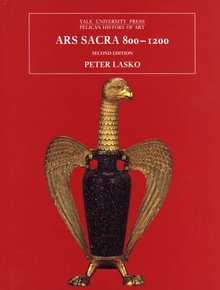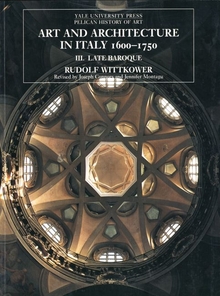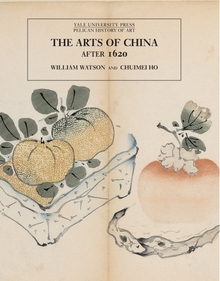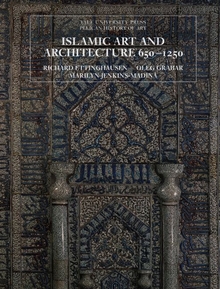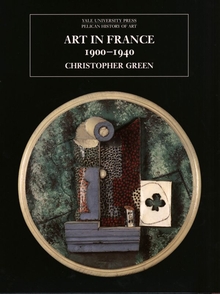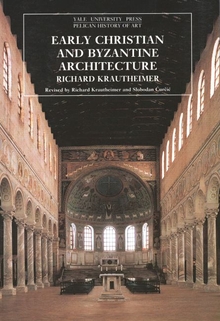The Art and Architecture of Islam, 1250–1800
WARNING
You are viewing an older version of the Yalebooks website. Please visit out new website with more updated information and a better user experience: https://www.yalebooks.com
Sheila Blair and Jonathan Bloom

Read this book online via the A&AePortal, our art and architectural history eBook platform. To learn more about how to access this book, please contact us.
Virtually all the masterpieces of Islamic art—the Alhambra, the Taj Mahal, and the Tahmasp Shahnama—were produced during the period from the Mongol conquests in the early thirteenth century to the advent of European colonial rule in the nineteenth. This beautiful book surveys the architecture and arts of the traditional Islamic lands during this era.
Conceived as a sequel to The Art and Architecture of Islam: 650-1250, by Richard Ettinghausen and Oleg Grabar, the book follows the general format of the first volume, with chronological and regional divisions and architecture treated separately from the other arts. The authors describe over two hundred works of Islamic art of this period and also investigate broader social and economic contexts, considering such topics as function, patronage, and meaning. They discuss, for example, how the universal caliphs of the first six centuries gave way to regional rulers and how, in this new world order, Iranian forms, techniques, and motifs played a dominant role in the artistic life of most of the Muslim world; the one exception was the Maghrib, an area protected from the full brunt of the Mongol invasions, where traditional models continued to inspire artists and patrons. By the sixteenth century, say the authors, the eastern Mediterranean under the Ottomans and the area of northern India under the Mughals had become more powerful, and the Iranian models of early Ottoman and Mughal art gradually gave way to distinct regional and imperial styles. The authors conclude with a provocative essay on the varied legacies of Islamic art in Europe and the Islamic lands in the nineteenth and twentieth centuries.
"An extraordinary achievement. A balanced and very even-handed statement that should remain for a long time as a necessary reference and introduction to Islamic Art."—Oleg Grabar, Institute for Advanced Study, Princeton
"A book to savor: physically beautiful, its text a triumphant vindication of the traditional handbook, its wealth of ideas opening many new vistas. Altogether it represents a giant leap forward in the knowledge of later Islamic art."—Robert Hillenbrand, New York Times Book Review
"A fitting shrine to Islamic culture."—Joseph Williams, Antique Collector
"A superb example of the work being done in this field. . . . Blair and Bloom's route through the history and geography of Islamic art and culture gives much insight into this fabulous treasury."—Margaret Erskine, Times of London
"The daunting task this book sets itself is clarified vividly and beautifully by innumerable, mostly colour photographs and ground plans. Among art forms, the book, with its calligraphy and miniature paintings, is supreme...Revealed here is a world of spiritual symbolism, technical virtuosity and silken, colourful richness."—Patricia Jellicoe, World of Interiors
"Blair and Bloom's book is indispensable to anyone seriously interested in the subject. It is up-to-date, well referenced, and beautifully illustrated."—Robert Irwin, London Review of Books
"The challenge of [the] survey [is] to capture the interest of the general pubic, to sustain the attention of students, and to satisfy scholars in the field. Blair and Bloom have met the challenge admirably, and even reward the perseverance of those who follow their presentation to the end of the eighteenth century with a thought-provoking final chapter on the legacies of later Islamic art that takes up both the impact of Islamic art on the West and, even more provocatively, the impact of Islamic art on the Islamic world."—Marianna Shreve Simpson, Sixteenth Century Journal
"Blair and Bloom have succeeded admirable in achieving what they set out to do. There is no doubt that this work will be the definitive textbook on the subject."—Hugh Kennedy, American Historical Review
"The Islamic world has a wealth of medieval buildings of a complexity and beauty that puts the Gothic cathedrals of northern Europe in the shade. . . . [This book] is a beautiful and accessible guide to this artistic paradise."—Oxford Times
"Virtually all the masterpieces of Islamic art—the Alhambra, the Taj Mahal and the Tahmasp Shahnama—were produced during the period from the Mongol conquests in the early thirteenth century to the advent of European colonial rule in the nineteenth. This beautifully illustrated book surveys the arts and architecture of the traditional lands during this era. . . . This should become an important reference work and introduction to the art of Islam."—Columban Mission
"For the foreseeable future this is the essential introduction to the study of Islamic art since 1250, a satisfying, provocative, and useful work from two able and courageous scholars."—Walter B. Denny, Ars Orientalis
"An authoritatively scholarly survey of Islamic design, but many designers without a scholarly thought in their head will want them simply for the pleasure of their illustrations."—Stanley Abercrombie, Interior Design
"It is an impressive work. . . . with its excellent and plentiful colour illustrations (and colour, after all, is a key player in Islamic decorative art) [the book] has rightfully earned its place on the reading lists of courses on Islamic art and architecture."—Emma Parsons, Art Review
"[The Art of Architecture of Island: 1250-1800] should prove to be a most useful teaching tool"—William L. Hanaway, Middle East Studies Association Bulletin
"Lavishly illustrated, with many of the plates in color, extensively footnoted so that the curious reader can explore the field more deeply, The Art and Architecture of Islam, 1250-1800 is not only a work of careful and painstaking scholarship, an engagingly written and intellectually stimulating introduction, but also a truly striking and beautiful object. The book will, no doubt, open new vistas to a public only now becoming aware of the Islamic world's splendid artistic patrimony and will surely be indispensable as an initial introduction and guide to a generation of students of Islamic art."—Howard Crane, Ohio State University, Speculum—A Journal of Medieval Studies
"This is a worthy sequel. . . . [It] is up-to-date in the current research on Islamic art, and the text is informative as well as lucid. . . . This book, together with the first volume, is the best, if not the only text to be recommended for college-level courses, and a useful reference book for scholars."—U. U. Bates, Choice
"[A] well-written and well-illustrated volume. . . . The book's structure will make it a particularly useful adjunct to teaching, for it can be used on its own to gain an overview of the subject."—Priscilla P. Soucek, Journal of the Society of Architectural Historians
"Thoroughly annotated and indexed, the book includes an extensive bibliography that categorizes architectural studies by region and has separate sections on arts of the book and decorative arts by medium. . . . The book's illustrations are altogether exquisite, both pedagogically and visually. An example of art historical writing at its best. . . . It will quickly become a standard text in courses on Islamic Art."—John Renard, Religion and the Arts
"If I had only one book to take with me in a rocket ship to Mars, this might well be the one. As I have browsed, regarded, and read this book, my main wish is to spend more time with it; both to savor the inexhaustible richness of the art itself, and to hope to gain as deep and compassionate an understanding of the subject as the authors obviously share and impart to us."—Robert Kushner, Art Journal
Publication Date: September 25, 1996
150 b/w + 150 color illus.


